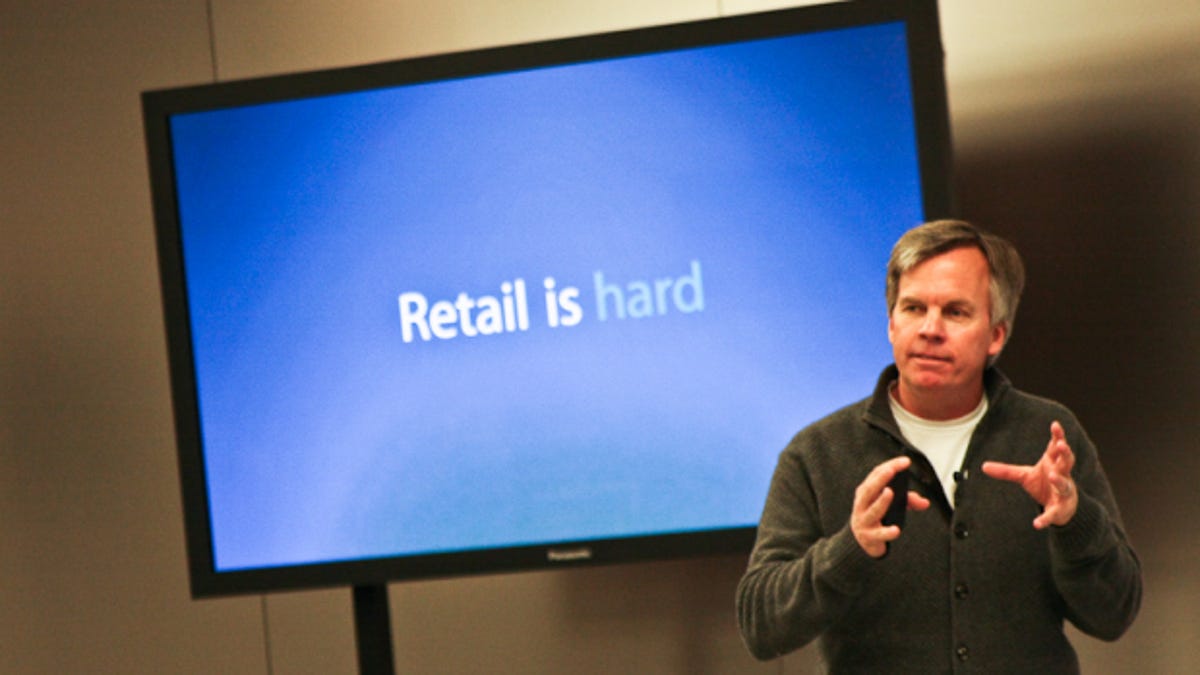The secret sauce to Apple's retail success? This man made it
After having worked with Steve Jobs to create Apple stores, Ron Johnson explains the lessons he learned and why the stores appeal to people in a Harvard Business Review guest post.

As the former vice president of retail at Apple, Ron Johnson partnered with Steve Jobs to plan the first Apple store. Now the CEO of J.C. Penney, Johnson reveals why Apple stores work.
Writing about his efforts in fashioning the Apple store in a Harvard Business Review guest post, Johnson explained that a store has to do more than just offer products for sale. It has to create an experience--something that turns it into more than just a store.
"Any store has to provide products people want to buy," Johnson wrote. "That's a given. But if Apple products were the key to the stores' success, how do you explain the fact that people flock to the stores to buy Apple products at full price, when Wal-Mart, Best-Buy, and Target carry most of them, often discounted in various ways, and Amazon carries them all--and doesn't charge sales tax!"
The secret?
The staff at the Apple store is focused on more than just selling stuff, Johnson says. Instead, the employees are there to genuinely try to help customers, whether that means selling them a new product or fixing their old one. Apple store staffers are well-trained and don't work on commission, Johnson explained, so their goal is build a relationship by figuring out what you want and making sure you leave satisfied.
"Compare that with other retailers, where the emphasis is on cross-selling and upselling and, basically, encouraging customers to buy more, even if they don't want or need it." Johnson added. "That doesn't enrich their lives, and it doesn't deepen the retailer's relationship with them. It just makes their wallets lighter."
As Johnson fully takes on the reins of J.C. Penney, he acknowledged that all retailers face the same challenge of attracting customers. Even the Apple store bumped into initial problems trying to get people to use the Genius Bar. But the company believed in that face-to-face approach and kept it until it turned into a successful store feature.
Rather than simply try to duplicate the approach of the Apple store or other popular models, each retailer needs to ask this key question: "How do we reinvent the store to enrich our customers' lives?" Johnson wrote.
Apple's customer-centric, no-pressure approach has paid off quite handsomely. An August study from research firm RetailSails found that Apple's stores generate more revenue per square foot than any other U.S. retailer.
At the time of the study, Apple had seen global store sales of more than $14 billion over the trailing four quarters. With 327 stores an average size of almost 7,900 square feet, Apple was making $5,626 per square foot, according to RetailSales.
In generating such huge revenue, Apple has easily surpassed such retail giants as Tiffany, with sales of $2,974 per square foot, and Coach, with sales of $1,820 per square foot.
Moving forward, Apple is expected to unveil its next iconic store this week--namely one nestled in the middle of Manhattan's Grand Central Terminal. Reaching across two balconies, the store will reportedly offer more than 23,000 square feet of products and services to customers. And the number of those customers could be huge.
Around 750,000 people wend their way through Grand Central on an average day, and about a million each day during the holidays, according to New York's Metropolitan Transportation Authority.

